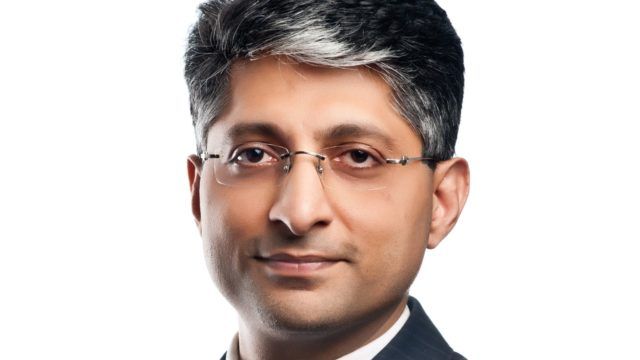Neeraj Seth (pictured), chief investment officer and head of Asia Pacific fundamental fixed income at BlackRock, is cautious on duration at the moment given the fiscal backdrop in the US and instead favours the front end of the curve.
Going into the year there was no shortage of asset managers encouraging investors to extend duration, although that call has become less and less consensus as the markets have recalibrated the likelihood of rate cuts.
Seth also points to the fact that investors are not getting paid to extend duration at the moment, although above all he points to the looming fiscal situation in the US, which is likely to plague whichever party wins the White House in November.
The US budget deficit is projected to jump to nearly $2trn for the fiscal year, making it the largest it has been in history aside from during the Covid-19 crisis, although this has largely gone under the radar among investors who have had a laser focus on monetary policy.
Seth reckons there are indications that this is starting to change and investors are switching their attention back to the fiscal situation as evidenced by the reaction to recent elections in Mexico and France, which makes him cautious on duration.
“If the curve was steep and you had a lot more term premium, I would have been a lot more positive for taking duration in the US, but given where the curve is at this point and the fiscal situation, which is going to be very similar despite who comes into the White House, I would be a bit more cautious in terms of taking a lot of long end of the curve risk,” he said.
“Interestingly, if you look at the performance of the long end of the curve, it’s not great. If you look at the carry to vol ratio in terms of where the nominals are versus the volatility of the 30-year point of the curve, I’m not convinced you’re getting paid to take that risk.”
Asian credit
Notwithstanding his caution, Seth remains constructive on the asset class and in Asian credit in particular, which has outperformed the other major regions this year, albeit this is to some extent making up for a lacklustre performance in 2021 and 2022 and to a lesser extent 2023.
“I think there’s still room to go. In dollar-denominated credit, given the overall yields, the strong fundamental backdrop for the credit markets in the region and more specifically room for some further spread compression in the high yield markets, I do believe you have room to go from here in terms of the asset class generating strong returns over the next six, 12 and 18 months,” he said.
Near term, he favours high yield over investment grade and despite the fact that the former has rallied so extensively so far this year, he believes there is further to go.
“When you look at the overall spread for Asia high yield excluding some of the distressed names and look at it on a relative basis compared with the US or Europe, I still think there’s some room to go,” he said.
High yield has rallied this year in part because of the performance of a number of distressed names such as frontier markets like Sri Lanka and Pakistan as well as China real estate and Seth is quick to point out that he favours a tilt towards quality.
Given this tilt towards quality, his views on high yield are very much consensus as he favours India, Macau gaming and subordinated bank debt, particularly out of Australia.
Regarding investment grade, he is less bullish, although he points out that once the US Federal Reserve starts cutting, most likely towards the end of the year, this will create a supportive tailwind for all-in yield buyers.

















